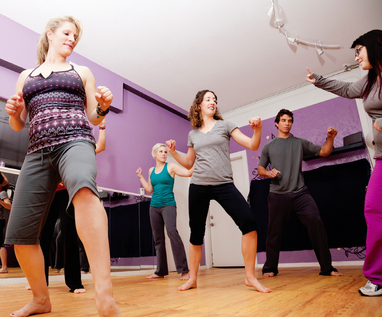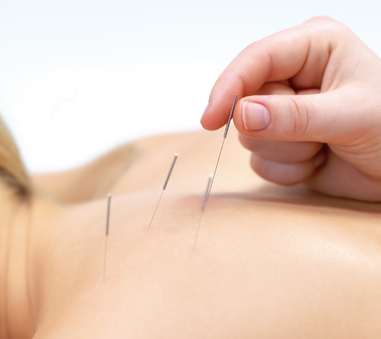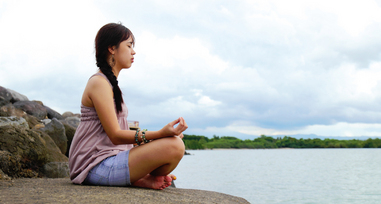Uses of complementary therapies in nursing practice
In the literature, there is very little agreement about categories and examples of therapies variously labelled as natural, alternative or complementary (Jacka, 1998; Jonas and Levin, 1999; Kuhn, 1999). In this section, different classifications of complementary therapies are reviewed and examples of the RCNA categorisation are described for, specifically, aromatherapy, therapeutic touch and healing touch, massage and meditation.
Classifications of complementary therapies
Texts vary on the categorisations of complementary therapies. For example, Kuhn (1999) includes herbology, nutrition, mind and body control, and alternative systems of medical practice, manual healing, bioelectrical applications and biological treatments. The use of naturally occurring non-patented herbs in healthcare is variously termed herbology, phytotherapy and herbal medicine. Although there are thousands of examples, some of the most popular herbs selected for a comprehensive description by Kuhn include aloe vera, bilberry, echinacea, garlic, ginger, ginkgo, ginseng, green tea, hawthorn, kava, liquorice, milk thistle, St John’s wort, valerian and vitex. Nutrition as a complementary way to health includes all the standard principles of the orthodox, scientific approach to the use of food and fluids, with emphasis on the need for organic foods, especially fruit and vegetables, reduced use of food additives and pesticides and the judicious use of special diets such as the macrobiotic diet, foods containing phytochemicals, fresh juices and fasting.
Mind and body control therapies include aromatherapy, biofeedback therapy (e.g. via electrodes on the frontalis and trapezius muscles and the fingers of one hand), dance therapy (Figure 32-1), guided imagery, hypnotherapy, meditation, qigong, Tai Chi and yoga (Figure 32-2).

FIGURE 32-1 Young adults participating in dance therapy.
Image: iStockphoto/Alina Solovyova-Vincent.

FIGURE 32-2 Yoga is a discipline that focuses on muscles, posture, breathing and consciousness.
Image: Shutterstock/Pete Saloutos.
Alternative systems of medical practice include acupuncture (Figure 32-3), ayurvedic medicine, homeopathy, naturopathic medicine and oriental medicine.
Acupressure, chiropractic medicine, massage, reflexology, Reiki, rolfing and therapeutic touch are classified by Kuhn as manual healing.
Bioelectromagnetic applications include light therapy, magnetic field therapy and chelation therapy and are classified as biological treatments.
More recently, Braun and Cohen’s (2007) landmark Australian text Herbs and natural supplements: an evidence-based guide positions CAM parallel with mainstream medicine to work alongside conventional medicine to bring about enhanced health for its users. According to the RCNA position statement, complementary therapies used in nursing practice to augment client care can be grouped into categories, such as traditions of healing (including aromatherapy, acupuncture and reflexology), therapeutic use of self (including humour, therapeutic and healing touch, and visualisation therapy), physical therapies (including massage and hydrotherapy) and energy therapies (including meditation, guided imagery and music therapy).
Examples of complementary therapies
A selection of complementary therapies that may be used in nursing practice are described below.
Aromatherapy
Aromatherapy uses essential oils obtained from plants (Box 32-3) for healing by inhalation or external application. The oils may have been extracted from roots, flowers, bark, leaves and fruit rinds from a variety of plants. The mode of delivery of the therapy depends on the type of essential oil preparation and the reason for its use. For example, peppermint oil may be used as a stimulant via inhalation, and tea-tree (melaleuca) oil may be used on the skin as an antiseptic. Inhalation may be through diffusers and sprays, and external application may be through massage, bathing, facial compresses, masks, lotions and creams, and products used in hair care. In making a case for its use in the United Kingdom, Buckle (2007) reviewed a number of studies from the United States in which aromatherapy was used with effect by nurses in the management of wounds, nausea, agitation and venous access phlebotomy.
BOX 32-3 ESSENTIAL OILS AND THEIR USES
Bergamot: skin antiseptic, antispasmodic for gastrointestinal cramps, skin care tonic.
Chamomile: anti-inflammatory, antidepressant, antiemetic, antiseptic, hair care, stress reduction.
Eucalyptus: general antiseptic, expectorant, decongestant, antiviral, insect repellent.
Geranium: calms catecholamine release, balances mind and body, skin care astringent, antiseptic, tones scalp and decreases oiliness in hair care, insect repellent.
Jasmine: aphrodisiac, relieves anxiety and depression.
Lavender: relieves anxiety and depression, skin care antiseptic (Lavandula angustifolia), increases mucus elimination in respiratory diseases, hair care, headache relief.
Mint: awakens the mind, decongestant and expectorant, relaxes gastrointestinal system.
Neroli: antidepressant, antispasmodic, sedative.
Rose: skin astringent, antidepressant.
Rosemary: restores blood in anaemia and menses, increases digestion, antiseptic, diuretic, heals skin wounds.
Sandalwood: antidepressant, antiseptic for the urinary system, aphrodisiac.
Tea-tree oil: immunostimulant to treat acne, psoriasis, herpes, insect repellent, antifungal for ringworm, athlete’s foot, thrush.
Ylang-ylang: skin care, hair care, sedative, reduces tachycardia and blood pressure.
Adapted from Kuhn MA 1999 Complementary therapies for health care providers, Baltimore. Lippincott, Williams & Wilkins.
Nurses should be aware of the risks of using aromatherapy, as each oil can have adverse effects and people with lung disease and asthma and pregnant women should not inhale oils. The judicious use of essential oils is a specialised practice, which should be undertaken only by knowledgeable and skilful practitioners, especially when caring for people in the public domain (Buckle, 2003; Meyer, 2001; Price and Price, 1999). Short courses are available through local aromatherapy networks, and nurses should avail themselves of these to ensure that they are knowledgeable enough to use aromatherapy safely and effectively in nursing practice. A Cochrane systematic review of aromatherapy for the treatment of postoperative nausea and vomiting (see Research highlight overleaf) has been carried out by nurse researchers from the Queensland Centre for Evidence-Based Nursing and Midwifery (Hines and others, 2012).
• CRITICAL THINKING
In the healthcare environment it is often necessary to consider the effect of burning oil in a shared space. How do you ensure the rights of other patients, clients, residents and staff who may be affected by the aromas that are generated while still being sensitive to the needs of those under your care?
Therapeutic touch and healing touch
Therapeutic touch and healing touch have some similarities and are listed together, based on their shared assumption that healing occurs through adjustments to the human energy fields and centres.
Therapeutic touch (TT) is an energy-based healing technique that originated in America in 1972 via Dolores Krieger and Dora Kunz. It has become established in various healthcare professions, is the subject of various theses, is listed in Medline in various languages and is taught in 50 countries (Krieger, 1973).
Most studies reported in the literature relate to therapeutic touch, because it is the antecedent of healing touch (HT), named differently because of some philosophical and procedural variations. For the most part, HT cites as empirical evidence the research of its predecessor, TT. According to Mentgen and Bulbrook (1996), HT is ‘an energy-based therapeutic approach to healing’, which aims ‘to restore harmony and balance in the energy system to help the person to self-heal’. The therapy involves a physical assessment of the person, including the energy field, an intervention phase and a grounding phase. Gentle, light or no-touch techniques vary for energy pattern sensing and altering, depending on what is assessed in the person’s field. According to Mentgen and Bulbrook (1996), ‘a healer must trust that what occurs in this subtle, non-invasive work is for the highest good of the individual’.
Research focus
Postoperative nausea and vomiting (PONV) is a common and unpleasant phenomenon and current therapies are not always effective for all patients. Aromatherapy has been suggested as a possible addition to the available treatment strategies. This nursing research sought to establish what effect the use of aromatherapy has on the severity and duration of established PONV and whether aromatherapy can be used with safety and clinical effectiveness comparable to standard pharmacological treatments.
Research abstract
The literature was searched up to August 2011 including Cochrane Central Register of Controlled Trials; MEDLINE; EMBASE; CINAHL; CAM on PubMed; Meditext; LILACS; and ISI Web of Science as well as grey literature sources and the reference lists of retrieved articles. All randomised controlled trials (RCTs) and controlled clinical trials (CCTs) where aromatherapy was used to treat PONV were included. Interventions were all types of aromatherapy. Primary outcomes were the severity and duration of PONV. Secondary outcomes were adverse reactions, use of rescue antiemetics and patient satisfaction with treatment.
The nine included studies comprised six RCTs and three CCTs with a total of 402 participants. Compared with placebo, isopropyl alcohol vapour inhalation (also known as rubbing alcohol, commonly found in the type of ‘prep-pad’ used to clean skin prior to injection) was effective in reducing the proportion of participants requiring rescue antiemetics (RR 0.30, 95% CI 0.09–1.00, p = 0.05). However, compared with standard antiemetic treatment, isopropyl alcohol was not effective in reducing the proportion of participants requiring rescue anti-emetics (RR 0.66, 95% CI 0.39–1.13, p = 0.13) except when the data from a possibly confounded study were included (RR 0.66, 95% CI 0.45–0.98, p = 0.04). Where studies reported data on patient satisfaction with aromatherapy, there were no statistically significant differences between the groups (RR 1.12, 95% CI 0.62–2.03, p = 0.71).
Evidence-based practice
• Isopropyl alcohol was found to be more effective than saline placebo for reducing PONV but less effective than standard anti-emetic drugs.
• There is currently no reliable evidence to support the use of other aromatherapies such as peppermint oil to treat PONV.
• No included studies reported any adverse effects from the aromatherapies used.
LIMITATIONS OF THERAPEUTIC AND HEALING TOUCH
Although the research base of TT is considerable and growing, critics claim that it lacks scientific validation and that its conceptual basis is suspect as an energetic healing therapy (Oberst, 1995; Rosa, 1995). A common point of opposition to TT is the repudiation of the existence of a human energy field, as discussed earlier. While one author labels TT as ‘quackery’ (Rosa, 1995), another heralds its practitioners as ‘revolutionary’ (Peters, 1999). These kinds of contradictions are indicative of healthy scholarly debate about complementary therapies. The Cochrane systematic review by So and colleagues (2008) of touch therapies for pain relief found only modest treatment effects (see Research highlight on the opposite page).
Massage
Massage is a therapeutic method of rubbing, stroking, tapping and kneading the body (either a particular area or the whole body) for the purpose of treating physical and emotional disorders, increasing blood flow, reducing pain and promoting relaxation, muscle tension release and general health and wellbeing (Jonas and Levin, 1999). There are many varieties of massage (Box 32-4), including Swedish, Esalen, neuromuscular therapy and oriental.
TRADITIONAL EUROPEAN
Swedish massages: uses massage strokes such as effleurage (gliding), petrissage (lifting, rolling, kneading), friction (circular), vibration and tapotement (percussion or tapping) to enhance blood flow through soft tissues.
CONTEMPORARY WESTERN
Esalen: uses slow, rhythmic hypnotic techniques to create deep relaxation and general wellbeing.
NEUROMUSCULAR THERAPY
Soft-tissue: manipulation to relieve pain and dysfunction by balancing the nervous and musculoskeletal systems.
Deep-tissue: uses fingers, thumbs and elbows with greater pressure to release muscular tension.
Sports: to enhance athletic performance by removing lactic acid, increasing range of movement and promoting healing through compression, trigger-point or direct pressure and cross-fibre friction.
Manual lymphatic drainage: light, slow, repetitive strokes to facilitate the lymphatic drainage of excess water, wastes and toxins.
STRUCTURAL AND FUNCTIONAL MOVEMENT INTEGRATION
Alexander technique: rebalances the body through awareness, movement and touch, by emphasising alignment of the spine, head, body, neck and torso.
Hellerwork: movement re-education for stress-free body movements for everyday activities.
Movement therapy: employs Alexander technique and Feldenkrais (see Box 32-2) to use movement to re-educate the body and mind.
Orthobionomy: enhances balance and wellbeing through gentle, non-invasive touch, dialogue and movement education.
Rolfing: deep-tissue work to bring major body segments into alignment.
Rosen method: induces relaxation and prevents illness through gentle touch and verbal support to release unexpressed, repressed or suppressed tensions.
Structural integration: includes rolfing and Hellerwork to retrain and align body movements.
Trager: sets of movements to release deep-seated psychophysiological tensions.
ORIENTAL
Jin Shin Jyutsu: a Japanese healing tradition of gentle application of the hands along energy pathways to promote wellbeing.
Shiatsu: balances the body through acupressure, stretching and movement.
ENERGETIC
Polarity therapy: involves hands-on techniques such as manipulation of pressure points and joints, massage, breathing exercises, hydrotherapy, exercise, reflexology and holding pressure points on the body.
Reiki: uses universal life-force energy to balance and amplify energy for healing and wellbeing.
Therapeutic touch: corrects imbalances by modulating the energy field surrounding the body.
OTHER
Bioenergetics: uses a combination of psychotherapy, breathing and bodywork to release trapped energy and tension.
Bonnie Prudden myotherapy: uses trigger points and corrective exercise to relieve pain and dysfunction.
Craniosacral therapy: gentle, non-invasive pressure to the bones and soft tissue of the skull and pelvis to release tensions and create balance.
Reflexology: uses manual pressure applied to specific areas, or zones, of the foot that correspond to areas of the body in order to relieve stress and prevent and treat physical disorders.
Zero balancing: painless, hands-on therapy to align body energy with body structure.
Massage techniques for structural and functional movement integration include Hellerwork, rolfing, structural integration, movement therapy, the Rosen method, Trager, Alexander technique and orthobionomy. Oriental methods include Jin Shin Jyutsu and Shiatsu. Energetic methods sometimes classified as massage include therapeutic touch, polarity therapy and Reiki. Other approaches to massage include reflexology, craniosacral therapy, Bonnie Prudden myotherapy, bioenergetics and zero balancing. The use of hot stones and aromatherapy oils complement massages and have been found to be therapeutic.
Research focus
Pain is a global public health problem affecting the lives of large numbers of patients and their families. Touch therapies (healing touch (HT), therapeutic touch (TT) and Reiki) have been found to relieve pain, but some reviews have suggested there is insufficient evidence to support their use. This systematic review aimed to evaluate the effectiveness of touch therapies (including HT, TT and Reiki) on relieving both acute and chronic pain, and to determine any adverse effect of touch therapies.
Research abstract
The literature was searched up to June 2008 including various electronic databases including the Cochrane Library, MEDLINE, EMBASE, CINAHL, AMED and others. Reference lists and bibliographies of relevant articles and organisations were checked. Experts in touch therapies were also contacted. Randomised controlled trials (RCTs) or controlled clinical trials (CCTs) evaluating the effect of touch on any type of pain were included. Similarly, only studies using a sham placebo or a ‘no treatment’ control was included.
24 studies involving 1153 participants met the inclusion criteria. There were 5, 16 and 3 studies on HT, TT and Reiki respectively. Participants exposed to touch had on average of 0.83 units (on a 0–10 scale) lower pain intensity than unexposed participants (95% CI −1.16 to −0.50). Results of trials conducted by more experienced practitioners appeared to yield greater effects in pain reduction. It is also apparent that these trials yielding greater effects were from the Reiki studies. Whether more-experienced practitioners or certain types of touch therapy brought better pain reduction should be further investigated. Two of the 5 studies evaluating analgesic usage supported the claim that touch therapies minimised analgesic usage. The placebo effect was also explored. No statistically significant (p = 0.29) placebo effect was identified.
Evidence-based practice
• Touch therapies were found to have a modest effect on pain relief.
• Although the lack of sufficient data means that the results are inconclusive, the evidence that does exist supports the use of touch therapies in pain relief.
• There was some evidence that touch therapies reduce analgesic usage.
• The placebo effect has been also widely explored. No statistically significant placebo effect has yet been identified except through one study on children.
• No adverse effect of this treatment has yet been identified.
• More research on HT and Reiki in relieving pain is needed.
Special instruction and practice is needed to ensure safe and effective results with many types of massage (Figure 32-4). Nurses need to remember, however, that they can incorporate a gentle foot or hand massage into hygiene activities when helping clients in the course of daily nursing care. If nurses intend to use specialised massage techniques, they need to seek instruction in appropriately accredited courses.


